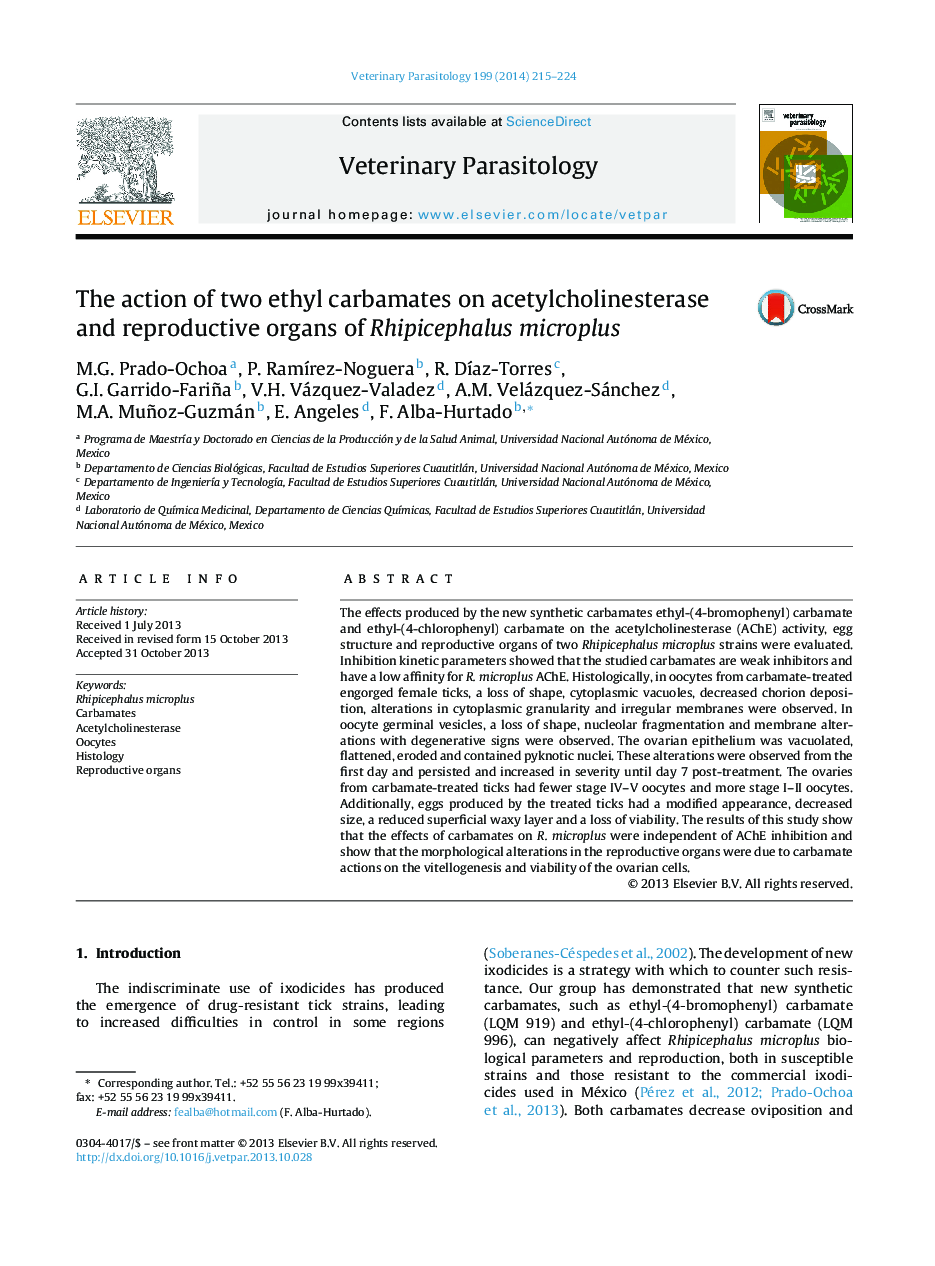| Article ID | Journal | Published Year | Pages | File Type |
|---|---|---|---|---|
| 5803833 | Veterinary Parasitology | 2014 | 10 Pages |
The effects produced by the new synthetic carbamates ethyl-(4-bromophenyl) carbamate and ethyl-(4-chlorophenyl) carbamate on the acetylcholinesterase (AChE) activity, egg structure and reproductive organs of two Rhipicephalus microplus strains were evaluated. Inhibition kinetic parameters showed that the studied carbamates are weak inhibitors and have a low affinity for R. microplus AChE. Histologically, in oocytes from carbamate-treated engorged female ticks, a loss of shape, cytoplasmic vacuoles, decreased chorion deposition, alterations in cytoplasmic granularity and irregular membranes were observed. In oocyte germinal vesicles, a loss of shape, nucleolar fragmentation and membrane alterations with degenerative signs were observed. The ovarian epithelium was vacuolated, flattened, eroded and contained pyknotic nuclei. These alterations were observed from the first day and persisted and increased in severity until day 7 post-treatment. The ovaries from carbamate-treated ticks had fewer stage IV-V oocytes and more stage I-II oocytes. Additionally, eggs produced by the treated ticks had a modified appearance, decreased size, a reduced superficial waxy layer and a loss of viability. The results of this study show that the effects of carbamates on R. microplus were independent of AChE inhibition and show that the morphological alterations in the reproductive organs were due to carbamate actions on the vitellogenesis and viability of the ovarian cells.
